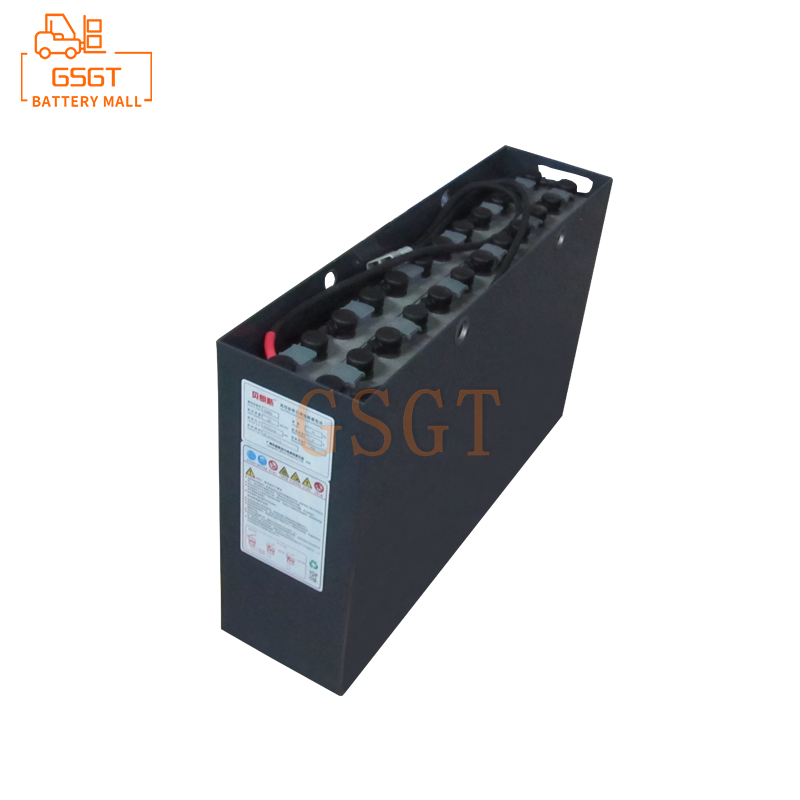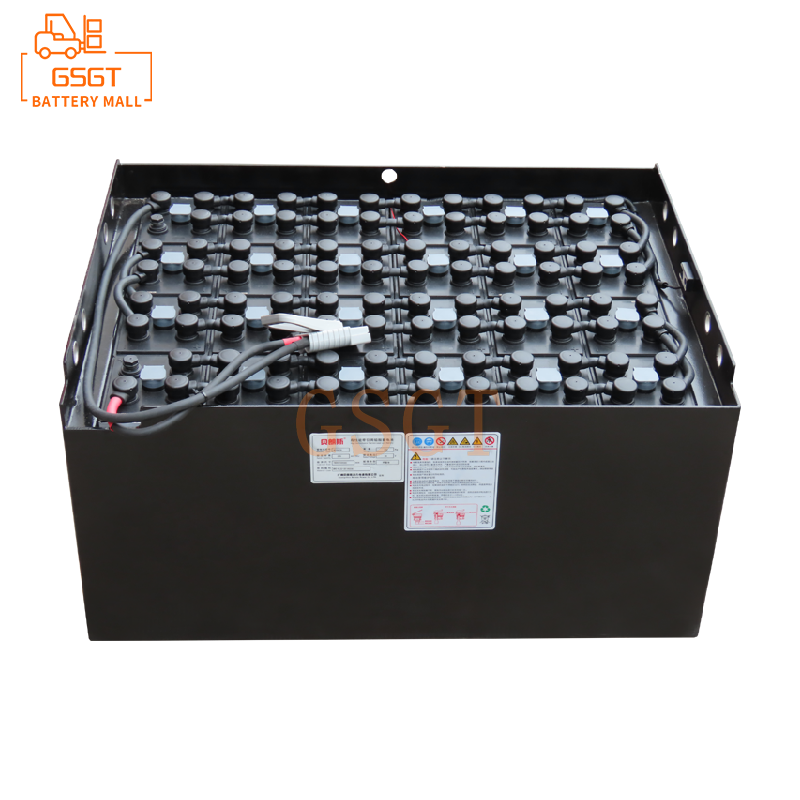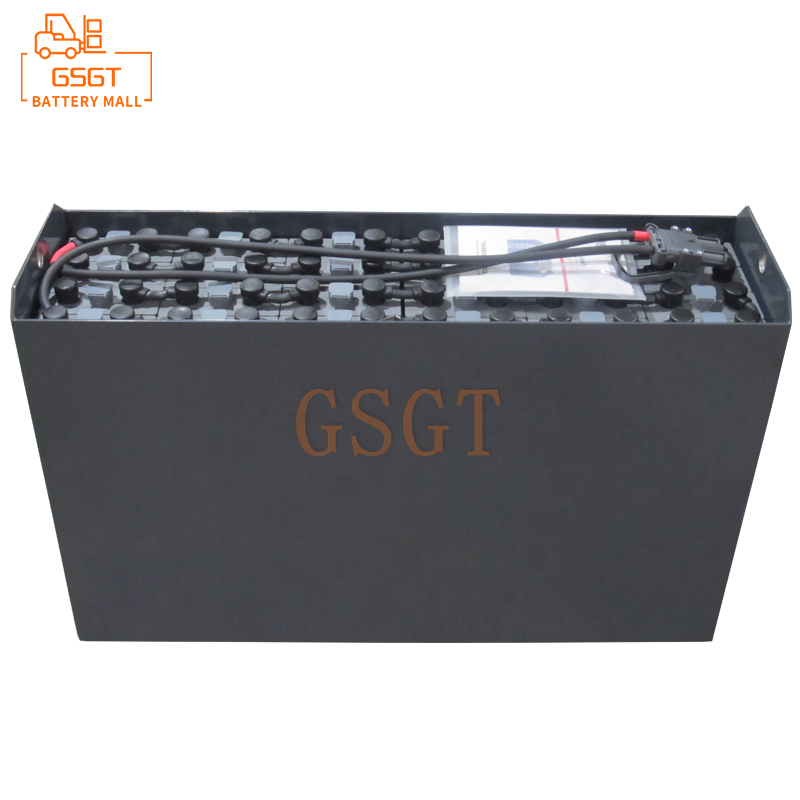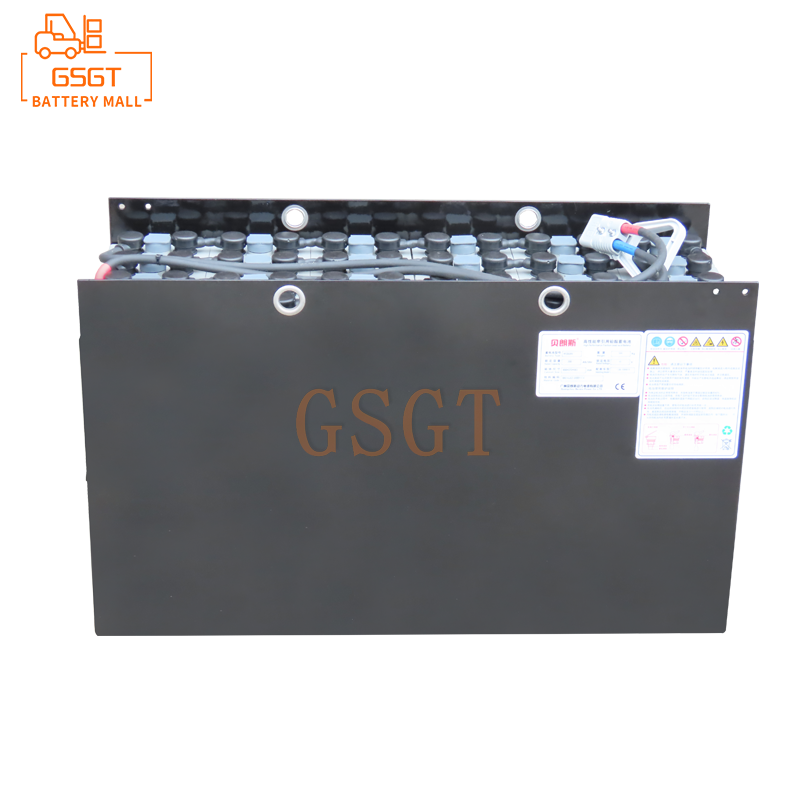Time:2025-06-06 10:52:13
Browse:542
Abstract
This article conducts an in-depth discussion on the risks caused by poor contact in the wiring of forklift lead-acid battery packs, systematically analyzes the causes of poor contact and the various risks it triggers, and specifically proposes comprehensive risk prevention and control strategies, aiming to provide scientific and effective guidance for the standardized management and safe operation of forklift lead-acid battery pack wiring. Reduce the safety hazards and equipment failure rate caused by poor wiring contact to ensure the safe and efficient operation of industrial production.
1. Introduction
In the field of modern industrial logistics, forklifts, with their efficient cargo handling capabilities, have become indispensable equipment in the production and operation of enterprises. As the core power source of forklifts, the stability of the performance of lead-acid batteries directly affects the normal operation of forklifts. Among them, the wiring system of the battery pack is like the "power blood vessels" of the forklift, responsible for the transmission and distribution of electrical energy. However, in the actual usage process, the problem of poor wiring contact occurs frequently, which not only affects the working efficiency of the forklift but may also trigger a series of serious safety risks, such as fire and electric shock accidents. Therefore, it is of great practical significance to conduct in-depth research on the risks caused by poor contact in the wiring standards of forklift lead-acid battery packs and formulate effective prevention and control measures.
2. Analysis of the Causes of Poor Wiring Contact in Forklift Lead-Acid Battery Packs
(1) The installation process is not standardized
During the installation of lead-acid battery packs for forklifts, if the operators do not strictly follow the wiring standards, it is very likely to cause poor contact problems. For instance, the crimping of the terminal blocks is not firm and does not meet the specified crimping standards. During the operation of the forklift, affected by factors such as vibration, the connection between the terminals and the wires gradually loosens. The winding method of the wire and the terminal post is incorrect, the number of winding turns is insufficient or the winding direction is wrong, which reduces the contact area and increases the contact resistance. In addition, during installation, the wires and terminal blocks were not cleaned. The residual oil stains, oxides and other impurities on the surface hindered the smooth transmission of current, thereby causing poor contact.
(2) Aging and wear of components
When lead-acid battery packs are in a state of charge and discharge cycles for a long time, the internal components such as plates and separators will gradually age. Meanwhile, during the operation of the forklift, the wiring system is constantly subjected to external forces such as vibration and friction. The insulation layer of the wires is prone to damage, and the terminal blocks will also wear out. As the usage time increases, these aging and wear problems become increasingly serious, leading to a gradual deterioration of the contact between the wire and the terminal, as well as between the terminal and the terminal post, an increase in contact resistance, and eventually causing poor contact faults.
(3) Impact of environmental factors
The working environment of forklifts is complex and diverse. Many harsh environmental conditions can have adverse effects on the wiring system of lead-acid battery packs. In high-temperature environments, the insulation layer of the wire will age, harden, become brittle, and even crack, thereby affecting the connection stability between the wire and the terminal. In a humid environment, moisture is prone to invade the terminal blocks and the connection points of the wires, causing oxidation and corrosion, and increasing the contact resistance. In addition, in an environment with a lot of dust, the dust will adhere to the terminal blocks and the surface of the wires, forming an insulating layer that hinders the conduction of current and leads to poor contact.
(4) Inadequate maintenance and upkeep
Regular and standardized maintenance is the key to ensuring the normal operation of the lead-acid battery pack wiring system of forklifts. However, in actual work, some enterprises do not attach sufficient importance to the maintenance of forklift battery packs and have not established a complete maintenance and care system. For instance, if the wiring system is not inspected regularly, potential problems such as loose terminal blocks and damaged wires cannot be detected in time. The contact points were not cleaned and lubricated, which intensified the oxidation on the surface of the contact points. For components that have already shown symptoms of poor contact, timely repair or replacement was not carried out, resulting in the continuous deterioration of the problem.
3. Risks caused by poor wiring contact of forklift lead-acid battery packs
(1) Electrical fault risk
Increased voltage drop: When the wiring contact is poor, the contact resistance will increase significantly. According to Ohm's Law, when the current is constant, an increase in resistance will lead to an increase in the voltage drop across the contact points. This will cause the actual voltage obtained by each component of the forklift's electrical system to be lower than the rated voltage, thereby affecting the normal working performance of the components, such as a decrease in motor speed, weakened light brightness, etc. In severe cases, it may even lead to the equipment being unable to start.
Local overheating: An increase in contact resistance will also cause a large amount of heat to be generated at the contact points. Excessively high temperatures not only accelerate the aging and damage of the insulation layer of the wires, but may also cause short circuits in the wires, burn out electrical components, and even lead to fire accidents. In addition, local overheating can also cause damage to lead-acid batteries themselves, affecting their service life and performance.
Equipment maloperation: Voltage fluctuations and unstable currents caused by poor contact may interfere with the normal operation of the forklift control system, leading to inaccurate sensor signals and misjudgment by the controller, which in turn causes abnormal actions of the forklift, such as sudden acceleration and brake failure, seriously threatening the safety of the operator and people around.
(2) Fire Risk
If the local high temperature caused by poor contact reaches the ignition point of flammable materials such as the insulation layer of the wire or the casing of the battery, it will cause a fire. At the same time, at the contact points, due to the generation of electric arcs, high temperatures and sparks will be produced. If these sparks come into contact with flammable materials around, such as oil stains and dust, they can also easily cause fires. Once a fire breaks out, it will not only cause damage to forklift equipment, but also spread throughout the entire workplace, resulting in significant property losses and casualties.
(3) Risk of electric shock
When poor wiring contact causes damage to the insulation layer of the wire or loosening of the terminal block, the live parts may be exposed. During the daily operation and maintenance of forklifts, if operators accidentally come into contact with these exposed live parts, electric shock accidents may occur. In addition, in a humid environment, due to the conductive effect of moisture, the risk of electric shock will further increase.
(4) Risk of economic loss
Various faults caused by poor wiring contact can lead to forklift shutdowns for maintenance, affecting the normal production progress of enterprises, resulting in a decline in production efficiency and order delays. Frequent fault repairs will also increase maintenance costs, including the cost of replacing parts and labor for maintenance, etc. Meanwhile, due to the long-term poor working condition of the battery pack, its service life will be shortened, and the batteries need to be replaced in advance, further increasing the operating costs of the enterprise.
4. Risk Control Strategies for Poor Wiring Contact in Forklift Lead-Acid Battery Packs
(1) Standardize the installation process
Strengthen the training of installation personnel: Enterprises should regularly organize the installation personnel of forklift lead-acid battery packs to participate in professional training, enabling them to be familiar with and master the norms and standards of wiring installation. The training content should include the correct crimping method of terminal blocks, the winding skills of wires and terminal posts, and the requirements for cleaning and handling, etc. By combining theoretical explanations with practical operations, the technical level and operational ability of installers can be enhanced to ensure that the installation process is standardized and accurate.
Strictly implement installation standards: Develop detailed wiring and installation standards and operating procedures for forklift lead-acid battery packs, and strictly adhere to them during the installation process. After installation is completed, a comprehensive inspection and test should be carried out, including checking the tightness of the terminal blocks, measuring contact resistance, and testing insulation performance, etc., to ensure that the wiring system meets safety requirements. Only installation projects that have passed the acceptance inspection can be put into use.
(2) Strengthen component management
Select high-quality components: When purchasing lead-acid battery packs for forklifts and related wiring components, products with reliable quality and excellent performance should be chosen. Give priority to using wires and terminal blocks with good electrical conductivity, corrosion resistance and wear resistance to ensure that they can adapt to the complex working environment of forklifts. At the same time, the quality inspection of components should be strictly controlled to prevent substandard products from entering the installation process.
Regular inspection and replacement: Establish a complete component inspection system and regularly inspect the plates, separators, wires, terminal blocks and other components of lead-acid battery packs. Replace aged and damaged components in a timely manner based on their service life and actual wear conditions. For instance, for wires that have been in use for a long time, even if there is no obvious damage on the surface, replacement should be considered to eliminate potential safety hazards.
(3) Improve the working environment
Environmental protection measures: According to the characteristics of the working environment of the forklift, corresponding protective measures should be taken. In high-temperature environments, insulation treatment can be carried out on the wiring system, such as installing insulation sleeves or setting up ventilation and heat dissipation devices, etc. In a humid environment, it is necessary to enhance the waterproof sealing of electrical equipment to ensure that the connection points of terminal blocks and wires are not invaded by moisture. For environments with a lot of dust, the wiring system should be cleaned regularly to prevent dust accumulation.
Environmental monitoring and control: Install environmental monitoring equipment to monitor environmental parameters such as temperature, humidity, and dust concentration in the workplace in real time. When environmental parameters exceed the safety range, timely control measures should be taken, such as activating cooling and dehumidification equipment and increasing ventilation and air exchange rates, to create a favorable working environment for the forklift lead-acid battery pack wiring system.
(4) Strengthen maintenance and upkeep
Establish a maintenance and care system: Enterprises should formulate a scientific and reasonable maintenance and care system for forklift lead-acid battery packs, clearly defining the maintenance cycle, content and standards. For instance, it is stipulated that a visual inspection of the wiring system be conducted once a week, contact resistance measurement and insulation performance testing be carried out once a month, and the terminal blocks be cleaned and tightened once a quarter, etc. At the same time, a maintenance record file should be established, detailing the time, content, problems found and handling of each maintenance.
Enhance the skills of maintenance personnel: Strengthen the skills training for maintenance personnel to enable them to master advanced detection technologies and maintenance methods. Regularly organize maintenance personnel to participate in technical exchanges and training activities to learn the latest maintenance knowledge and experience of forklift lead-acid battery packs. In addition, advanced detection equipment such as infrared thermal imagers and contact resistance testers can be introduced to enhance the accuracy and efficiency of maintenance and inspection.
5. Conclusion
The problem of poor wiring contact in forklift lead-acid battery packs cannot be ignored. The electrical faults, fires, electric shocks and other risks it causes seriously threaten the safety of industrial production and the economic benefits of enterprises. By conducting in-depth analysis of the causes of poor contact, such as non-standard installation processes, aging and wear of components, the influence of environmental factors, and inadequate maintenance, and adopting targeted risk prevention and control strategies such as standardizing installation processes, strengthening component management, improving working environments, enhancing maintenance, and introducing intelligent monitoring technologies, the occurrence probability of poor contact problems in wiring can be effectively reduced. Ensure the safe and stable operation of the lead-acid battery pack for forklifts. Enterprises should attach great importance to the management and maintenance of the lead-acid battery pack wiring system for forklifts, implement risk prevention and control measures in actual production and operation, and provide a strong guarantee for the sustainable development of the enterprise.

$1060

$5710

$3400

$2040

MESSAGE
Professional And Efficient
Security
Affordable Price
Professional Services